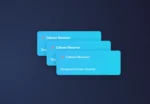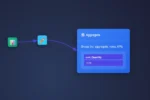
by tyler garrett | Jun 25, 2025 | Data Visual
Imagine having unhindered visibility into your production line—knowing precisely what causes defects, forecasting issues proactively, and gaining control that turns insights into immediate improvements. In today’s hyper-competitive manufacturing environment, leveraging data-driven solutions like Statistical Process Control (SPC) Dashboards is no longer optional; it’s an essential strategy for quality-centric innovation. SPC dashboards combine analytics, visualization capabilities, and real-time insights to ensure manufactured items maintain highest standards, reduce waste, and generate optimal ROI. Leaders empowered with effective dashboards are better equipped to maintain streamlined operations, improve decision-making speed, and sustain an unyielding competitive edge. Let’s dive deeper into how Statistical Process Control Dashboards can revolutionize your manufacturing quality control strategy.
Strategic Importance of Statistical Process Control Dashboards in Manufacturing
In today’s competitive, data-driven manufacturing environment, leveraging Statistical Process Control Dashboards can spell the difference between market leadership and trailing behind competitors. SPC dashboards represent an innovative approach that harnesses powerful analytics and visualization tools to reveal insights in production processes previously hidden behind numbers and manual investigation. These dashboards offer decision-makers real-time insights, proactively pinpointing potential defects, verifying process stability, and identifying root causes of production anomalies. Such a proactive strategy significantly reduces downtime, defective products, and resource waste.
With products becoming increasingly complex and consumer expectations climbing higher than ever before, integrating comprehensive analytics dashboards becomes crucial. SPC dashboards provide transparency into manufacturing KPIs and enable manufacturing teams to consistently monitor process capability indices, measure process variability, establish data-driven control limits, and drive continuous improvement initiatives. Unlike manual quality control, which tends toward reactionary measures—addressing defects post-production—SPC dashboards enable predictive capability, alerting teams before a problem becomes costly.
The transition toward automated, analytics-focused quality control isn’t limited to operational efficiency alone. Deploying intelligent SPC dashboards also enhances strategic leadership by providing visibility into performance metrics with executive-level clarity. This empowers leadership with quantifiable intelligence, leading to informed decisions, improved product consistency, and reputational confidence—crucial components for success.
The Core Principles of Statistical Process Control (SPC)
Statistical Process Control involves the use of statistical methods to monitor and control production processes. SPC is underpinned by several foundational principles that focus on improving quality, increasing efficiency, and minimizing production risks. At its heart, SPC emphasizes detecting variability within production processes—special-cause variations (irregularities) and common-cause variations (expected variation). Understanding this distinction enables manufacturers to act promptly where necessary without unnecessarily overreacting and interfering with normally functioning workflows.
The primary tool in SPC is the control chart, a statistical visualization designed to signal abnormal process deviations promptly. Control charts display real-time data with upper and lower control limits calculated from historical process performance data. Whenever a data point breaches these predetermined control limits, quality engineers are alerted quickly, prompting immediate investigation and corrective action. SPC methodologies thereby deliver valuable insights that foster intelligent decision-making, reduce guesswork, and improve process reliability.
Another key principle underpinning SPC is continuous improvement. It’s not enough to merely track quality metrics; SPC encourages using accumulated information and insights to drive sustainable and meaningful enhancements over time. This aligns perfectly with creatively designed Dashboard visualizations, which make data easily comprehensible and actionable, supporting real-time adjustments and improvements in the field.
Harnessing Real-Time Insight: Creating Statistical Process Control Dashboards
The primary strength of SPC dashboards lies in their ability to offer manufacturers real-time feedback and predictive insights into complex manufacturing processes. Real-time analytics dashboards can collate data from disparate sources throughout the production line, enabling swift identification and diagnosis of issues before they transform into severe operational interruptions. Such an intelligent, timely approach to quality management allows decision-makers to mitigate risk strategically and productively.
Quality-focused teams that leverage advanced dashboard technologies can integrate innovative solutions such as real-time input validation strategies to maintain data accuracy across continuously streaming production data. Furthermore, companies dealing with data arriving asynchronously or delayed can implement advanced analytical techniques to efficiently handle and interpret these challenges—as explored in our guide on processing temporal data and late-arriving events.
With dashboards built on robust data engineering foundations—such as those we provide through our specialized data engineering consulting services—businesses can derive meaningful conclusions directly from their operational data. The intuitive and dynamic visualization capabilities enable anyone in the leadership or engineering teams to quickly grasp significant trends or anomalies, breaking free from complex spreadsheets and cumbersome manual analysis.
Implementing Your SPC Dashboard: Best Practices and Pitfalls to Avoid
Successful implementation of SPC dashboards is not merely about selecting a software tool; it involves aligning methodology, technology platform, data readiness, and internal organizational practices. Businesses must carefully construct a thoughtful plan integrating their SPC dashboard into quality processes, ensuring stakeholder involvement, proper training, and enabling seamless integration into daily workflows.
Companies may face challenges in effective implementation if operating on legacy data systems or outdated technological infrastructure. In such scenarios, organizations can establish clear and progressive transformation strategies by implementing a well-defined deprecation policy for legacy data assets. Addressing these challenges explicitly will permit smoother adoption of advanced analytics systems and alleviate resistance to newer innovations.
Potential pitfalls in dashboard implementation often involve data governance issues, insufficient stakeholder training, or inadequate documentation. Organizations that do not provide self-service reporting capabilities frequently find their data teams overwhelmed. Hence, investing resources into building robust self-service analytics platforms allows broader accessibility, decreased analyst dependence, and fosters a culture of agile decision-making throughout your manufacturing teams.
Long-term Benefits and Competitive Advantage SPC Dashboards Provide
Effective SPC dashboards provide an unmatched long-term competitive advantage through enhanced manufacturing efficiency, lower operational risk, and consistent product quality. By aggregating structured, timely data monitoring, these dashboards offer a solid foundation that helps manufacturing executives better understand performance drivers, thereby enabling informed decision-making and strategic cost controls.
Data-savvy executives capable of leveraging advanced analytics tools ensure operational decisions remain impactful and proactive. Gaining insights like defect probability, predictive maintenance requirements, or potential bottlenecks fundamentally transforms decision-making dynamics within your business. Understanding these critical concepts is covered extensively in our resource 20 tips executives need to understand about data warehousing.
Additionally, effective SPC dashboards drive organizational agility in responding promptly to changing customer expectations or emergent competitive threats. Timely, accurate data injections allow organizations to pivot quickly, ensuring continuous alignment with evolving industry trends and increasing customer satisfaction. Ultimately, this critical capability positions businesses ahead of rivals who still rely on outdated, manual methods.
Looking Ahead: Future Trends in Statistical Process Control Dashboards
Modern SPC dashboards build a foundation for growth, innovation, and technological progression within manufacturing environments. Looking toward the future, the evolution of SPC technology will increasingly rely on sophisticated predictive analytics, artificial intelligence, and machine learning techniques. These advanced capabilities will further streamline quality management, proactively solving issues before they emerge from massive historical process data collections.
Incorporating Internet of Things (IoT) devices, sensor networks, and real-time automated scanning and inspection data will add scalability and complexity to future dashboard iterations. Moreover, moving toward advanced cloud analytics, SPC dashboards will empower scalable, secure, multi-site deployments, driving innovative data-sharing capabilities and efficient cross-organizational collaboration.
Manufacturers aspiring toward operational excellence must stay ahead of these emerging trends, embracing new methods and strategies proactively. Solutions like SPC dashboards demonstrate the profound impact that data-driven innovations continue bringing to manufacturing success, reinforcing competitive dominance and fueling further technological discovery.
If your organization is looking to strategically execute data-driven manufacturing improvements, our expert team at Dev3lop provides comprehensive support that aligns your quality goals with effective analytics implementations. Embrace the innovation, efficiency, and competitive edge that SPC dashboards offer, equipping your manufacturing teams to thrive in an increasingly complex industry landscape.
Thank you for your support, follow DEV3LOPCOM, LLC on LinkedIn and YouTube.

by tyler garrett | Jun 25, 2025 | Data Visual
Agriculture is undergoing a radical transformation driven by data analytics and innovative technology. As farms become increasingly digitized, the collection and visualization of agricultural data are transforming traditional practices into precision farming. By leveraging powerful analytics, farmers and agricultural businesses can optimize productivity, enhance resource management, and make proactive, data-informed decisions about their operations. At the intersection of data analytics and modern farming, visualization becomes the key tool for dissecting complex data, discovering insights, and improving overall outcomes. With the right approach to choosing the appropriate chart types and analytics methods, stakeholders receive actionable insights that drive sustainable agriculture. Join us as we delve into the strategic impact of data visualization in precision farming and explore how innovative agricultural analytics are reshaping the landscape of agriculture today.
Harnessing the Power of Precision Agriculture Analytics
Precision agriculture involves utilizing technology and data analytics to manage crop production more effectively, minimize waste, and maximize overall yield. At its core, precision farming analytics involves capturing vast amounts of data, from soil moisture and nutrient levels to weather patterns and machinery performance, and translating this data into detailed visualizations that farmers can understand intuitively. Advanced analytics techniques, such as regression analysis and machine learning, drive deeper insights from data collected in the field. Employing techniques like visual diagnostics for regression model evaluation allows farmers to pinpoint variables significantly impacting crop performance. As modern technology becomes increasingly decentralized, visual dashboards delivered via cloud-based solutions provide farmers real-time access, granting immediate oversight and dynamic responsiveness to changing conditions.
Software consulting and innovative solutions providers like ours recognize that strategic visualization of precision farming analytics must be both intuitive and insightful, enabling quick yet informed actions. With clearly consolidated insights gathered through detailed maps, dashboards, and real-time representations, farming enterprises transition seamlessly from reactive oversight to proactive management that anticipates challenges before they arise. In doing so, agricultural businesses accelerate their capacity for problem-solving and enhance overall productivity, thereby positioning themselves firmly ahead of conventional farming practices.
Customizing Visual Analytics for Actionable Insights
To realize the full potential of agricultural analytics, visualizations must be tailored to the specific needs and goals of farming stakeholders. For example, visual representations of soil health metrics, plant vigor, or real-time equipment sensor data require unique representations that effectively communicate complex multidimensional data sets. Customized visualization allows users to move beyond surface-level insights toward actionable decision insights that are contextually relevant. Here, practitioners and stakeholders are guided in properly choosing the right chart type for their agricultural data, ensuring clarity and accuracy in communicating insights. A carefully chosen visualization not only simplifies complex analyses but also significantly enhances decision-making processes on the farm.
From geo-spatial heatmaps that indicate nutrient depletion zones, to dashboards providing machinery downtime and operational optimization data, the effort in visualization significantly simplifies complex data streams. Furthermore, customizable user interfaces allow different stakeholders—from farm operators on the ground to strategic planners and even supply chain partners—to interact seamlessly with visualization tools. With thoughtful customization, we embrace complexity and distill it down to actionable insights, a specialty provided by analytical solutions targeted precisely to farming enterprises eager for strategic guidance.
Efficiency and Automation through Advanced Data Pipeline Techniques
Precision farming accumulates tremendous data volumes; processing, analyzing, and visualizing this data manually becomes nearly impossible and hugely inefficient. Consequently, the implementation of flexible, adaptable data pipelines is essential. Today, several advanced data management methodologies increase efficiency and ensure robust analytics. For instance, the adoption of self-healing data pipelines with circuit breaker patterns can prevent delays from system errors, ensuring continuous, efficient flow of critical farm data.
Additionally, modern data architectures often involve innovative approaches like recursive materialized view patterns, which provide efficient analytical hierarchies. Such methodologies can effectively tackle common agricultural data complexity, like multiple dependent variables or hierarchical farming datasets. Combining automation and sophisticated pipeline techniques, expertly managed through modern analytics infrastructure, precision agriculture analytics become dramatically more responsive—allowing for better agility and faster decision-making, thereby drastically reducing operational risks and enhancing productivity.
Empowering Farmers with Big Data and Innovative Technology
Modern analytics solutions rooted in big data platforms and advanced data transformation techniques are crucial in unlocking new opportunities for farmers. Technologies such as machine learning applications and artificial intelligence models create powerful synergies by turning vast datasets into real-time actionable insights. Utilizing high-performance code generation for data transformations significantly accelerates analytical processes, enabling farmers to extract transformative insights from large-scale agricultural data with unparalleled efficiency.
Precision agriculture’s effectiveness relies heavily on managing complex, large-volume datasets with ease, flexibility, and speed. By leveraging cutting-edge big data technologies, farmers efficiently scale up data processing capabilities to accommodate expanding plantations, navigate heavy seasonal needs, or manage data acquired from IoT-equipped machinery. This scalability dramatically improves decision-making timeliness and financial performance. Furthermore, as computational capabilities rapidly advance, opportunities in computing are evolving, including revolutionary innovations like quantum computing. Understanding and harnessing the potential of quantum computing power will redefine agricultural analytics, providing real-time predictive models and optimization strategies that were previously unimaginable.
Integrated AI Solutions for Smarter Precision Agriculture
Artificial intelligence integration not only enhances data processing capabilities but also effectively elevates precision agriculture’s automation potential. With hybrid AI systems that combine data analytics, expert reasoning, and real-time decision-making feedback loops, farms can drastically improve their operational strategies. Using strategic AI consulting services, such as our AI agent consulting services, farmers gain integrated solutions designed specifically to elevate decision support systems through intelligent, context-aware analytics.
AI integration provides unique capabilities ranging from predictive analytics for weather or disease threats to personalized farming recommendations, automated crop health monitoring, and highly adaptive resource management systems. AI-based agents assess historical and real-time data, interpret complex relationships within agricultural data sets, and transform this knowledge into actionable, visually intuitive insights for farmers. By effectively harnessing these intelligent systems driven by scalable computing, farmers can engage in proactive management rather than reactive troubleshooting, dramatically optimizing overall productivity and significantly reducing operational risks.
Future Outlook: Agriculture Analytics and Visualization Revolutionized
As agricultural digital transformation progresses, precision farming and data-driven analytics are set to radically redefine agricultural productivity and sustainability. The continuous evolution of advanced analytics, artificial intelligence, machine learning, and novel computational methods promises vast improvements in farming efficiency and effectiveness. New visualization techniques will unlock previously untapped insights, empowering farmers like never before and allowing farmers to deeply understand operational complexities.
Innovations such as artificial intelligence integration, big data automation, data pipeline optimization, and quantum-driven analytics revolutionize what farmers can achieve, creating thriving interconnected information systems able to adapt dynamically to real-world agricultural challenges. Agricultural visualization is not a siloed discipline—it’s part of a broader data analytics ecosystem constantly evolving toward excellence. The future of precision agriculture holds immense opportunities for stakeholders ready to leverage powerful analytics, innovative data visualization, and technology advancements. Agricultural stakeholders equipped with data expertise, strategic consulting, and cutting-edge visualization tools will define the future farming landscape.
Thank you for your support, follow DEV3LOPCOM, LLC on LinkedIn and YouTube.

by tyler garrett | Jun 25, 2025 | Data Visual
In modern medicine, the right diagnostic visualization tools can make the difference between early detection and missed opportunities. Medical imaging analytics harness cutting-edge visualization technology and powerful algorithms to present complex diagnostic data in intuitive ways, significantly enhancing decision-making speed and accuracy. Today’s healthcare providers face immense challenges—from increasing patient volumes to managing vast datasets efficiently. Fortunately, engaging with the right tools and methodologies enables healthcare organizations to tackle these challenges effectively. From navigating predictive analytics advancements like considering external factors in forecasting models, to integrating breakthrough AI applications such as natural language processing algorithms, medical imaging analytics demonstrates tangible value in empowering healthcare leaders to diagnose swiftly, accurately, and confidently.
Why Diagnostic Data Visualization is Crucial for Medical Imaging
Medical imaging, whether magnetic resonance imaging (MRI), computerized tomography (CT), ultrasound, or radiography, produces massive datasets that must be meticulously analyzed by specialists. Such large amounts of complex information can quickly become overwhelming, making the human eye susceptible to error or oversight. Diagnostic data visualization tools are instrumental in translating large and complicated medical data into accessible, actionable insights. Such visual representations significantly assist radiologists and clinical teams in identifying patterns, anomalies, and indicators of health issues more rapidly and effectively—all critical factors in patient outcomes and operational efficiency.
Medical data visualization not only enhances comprehension but also accelerates collaboration among multidisciplinary teams. Providers can effortlessly share visual analytics reports, collaborate remotely, and ensure consistent understanding regarding diagnosis and treatment plans. An effective visualization strategy empowers healthcare teams to quickly identify areas requiring immediate attention, enabling caregivers to devote more time toward personalized patient care. Just as companies leverage data in business environments such as those outlined in Austin-based operations using analytics, healthcare organizations can similarly benefit from prioritizing visualization to maximize operational decisions.
Embracing AI: The Next Step in Visualization Excellence
Artificial intelligence plays an instrumental role in amplifying the capabilities of healthcare visualization analytics. By leveraging machine learning algorithms, healthcare practitioners can detect subtler signs indicative of underlying disease conditions escalating accuracy that surpasses human manual interpretation alone. AI-powered visualization goes beyond mere clarity by actively providing data-backed insights, highlighting regions that demand comprehensive analysis or interventions. Healthcare organizations interested in leveraging the full potential of AI can explore expert AI agent consulting services for strategic implementation, customization, and fine-tuning.
Through predictive and prescriptive analytics, AI-driven visualization tools enable proactive healthcare practices capable of forecasting medical developments and identifying risks before they evolve into critical situations. These AI tools are sophisticated enough to consider intricate details that could otherwise escape notice, similar to how developers apply advanced code techniques to ensure accurate linguistic tagging explained in our piece about part-of-speech tagging with Python. Integrating these intelligent visual tools into diagnostic imaging processes enables organizations to advance towards precision medicine objectives by tailoring treatment solutions uniquely to an individual’s predictive health patterns.
Choosing the Right Visualization Solutions and Techniques
Selecting an optimal visualization solution for medical imaging analytics requires careful consideration of several crucial factors. At the top of this list is compatibility with existing healthcare information systems and infrastructure. Diagnostic platforms must easily integrate with electronic health record (EHR) solutions, laboratory information systems (LIS), and picture archiving and communication systems (PACS). A harmonious integration ensures smooth workflows and avoids disruptions that could compromise accuracy or patient care quality. Decision-makers must also factor in the solution’s ease of use, scalability to accommodate steadily growing organizational demands, and the availability of training or onboarding support.
Adopting powerful visualization platforms may inspire stakeholders to request numerous new features. However, understanding when to say ‘no’ to selected software features can actually bolster solutions’ quality and effectiveness. Effective medical visualization tools often share traits with advanced analytics practices, such as clarity of actionable insights and intuitive user interfaces. Leveraging approaches like pattern recognition, segmentation, and data labeling (similar to propagating data classification tags through transformations in analytics pipelines) can markedly enhance the capabilities of diagnostic visualization tools.
Optimizing Performance for Visualization at Scale
Healthcare facilities constantly grapple with rapidly increasing volumes of medical data. Processing and visualizing these immense datasets requires robust data engineering strategies, with foundational tactics like memory-mapped file utilization capturing improvements highlighted in our comparison blog Memory-Mapped Files vs Traditional I/O benchmarks. Implementing methods designed for handling large-scale medical imaging data efficiently helps organizations ensure stable, fast rendering of visualizations, saving valuable diagnostic time and helping streamline workflows even under heightened demands.
In addition, strategic data pipeline optimization, effective URL management through methods such as splitting URLs into easily interpretable columns, and utilizing performance-focused dashboards help diagnostic teams achieve seamless analysis experiences. Committing to performance optimization dramatically enhances visualization responsiveness without sacrificing accuracy, fostering trust among healthcare professionals who rely on diagnostic tools for critical medical decisions. Selecting visualization platforms optimized for performance at scale allows healthcare institutions to remain agile while dealing with increasing patient volumes and complexity.
Securing Visibility: Data Cataloging and Compliance
Alongside technological excellence, healthcare visualization platforms must prioritize compliance, data security, and patient confidentiality standards. Medical imaging data sensitivity demands strong management practices paired with transparent governance systems, ensuring healthcare institutions remain fully compliant with regulations such as HIPAA. Adopting robust and intuitive data catalog tools and best practices can efficiently manage, track, and govern diagnostic analytical assets, thereby ensuring data integrity and reducing compliance risks.
Clear governance practices also enable strategic inventory management and optimization, paralleling key business analytics strategies detailed in our blog on achieving efficient storage space and inventory optimization. Establishing proper data cataloging and classification workflows helps prevent unauthorized access or unintentional sharing of sensitive patient information, significantly boosting confidence among internal teams and external stakeholders. Secure data visualization infrastructure reinforces trust across the board—in patient-provider relationships as well as internal administrative trust, empowering faster, confident, and ethical decision-making.
Innovative Data Visualization Tools: Building the Future of Healthcare Diagnostics
As healthcare industries continue adapting to evolving patient needs and increasing technological innovation, diagnostic data visualization tools stand out as foundational. Integrating powerful visualization analytics enhances operational efficiency, supports improved patient outcomes, and sets a solid framework for consistently effective decision-making. Investing wisely in state-of-the-art diagnostic visualization solutions ensures healthcare organizations remain prepared to confront emerging challenges innovatively and strategically. Visualization professionals and medical informatics experts gearing towards these cutting-edge tools will increasingly position themselves and their teams toward excellence in precision care.
Collaboration with experienced analytics, data, and visualization specialists will be crucial for healthcare leadership looking to navigate the complex landscape of medical imaging visualization strategically and effectively. Are you ready to harness diagnostic analytics to substantially transform healthcare operations? Let us guide you toward comprehensive, modern diagnostic strategies for a healthier tomorrow.
Thank you for your support, follow DEV3LOPCOM, LLC on LinkedIn and YouTube.

by tyler garrett | Jun 25, 2025 | Data Visual
Imagine wielding the power to see every stop, shipment, and delay within your transportation logistics network—not simply as numbers buried in spreadsheets but as dynamic visual representations that clarify, optimize, and enhance your strategic decisions. Today’s route optimization visualization platforms transform intricate logistics data into intuitive visuals, empowering organizations with capabilities that were traditionally reserved for industry giants. As business leaders demand increasingly precise logistics management to remain competitive, data-driven solutions leveraging innovative visualization have become indispensable for achieving operational efficiency, customer satisfaction, and profitability. Let’s explore the strategic value of route optimization visualizations and how they bridge complex logistical data into actionable insights.
Understanding Route Optimization Visualization’s Strategic Role
In transportation logistics, every mile traveled translates directly into time, fuel, vehicle utilization, and ultimately cost. Understanding visualization purpose and intended audience lays the foundation for harnessing the true potential of route optimization technology. These visual platforms leverage historical and real-time logistics data to display optimized routes, identify bottlenecks, and allow users to simulate alternative scenarios swiftly.
With interactive route visualization tools, transportation professionals no longer need to wade through cumbersome statistical reports or complex spreadsheets. Instead, they can intuitively grasp critical operational insights—such as identifying underutilized vehicle assets or recognizing habitual inefficiencies like repetitive delivery delays. Route visualization dynamically integrates diverse data points, including traffic conditions, routes taken, fuel usage, delivery windows, and real-time driver location into cohesive interactive visuals.
Furthermore, route optimization visualization platforms serve a strategic communication role. For management teams, clearly visualized logistics networks illustrate areas for improvement, encourage informed decision-making, and strengthen alignment with organizational KPIs. Leaders empowered with visually engaging platforms can confidently articulate strategies, plan necessary adjustments, and effectively communicate these to stakeholders, delivering clarity and stakeholder buy-in through compelling evidence-based visuals.
Core Features of Effective Transportation Logistics Visualization Platforms
A successful visualization platform transcends simple data packaging. To effectively optimize transportation logistics routes, platforms require certain core features designed with innovation, scalability, and user-friendliness in mind.
Real-time Tracking and Monitoring
The integration of real-time tracking data enables companies to visualize shipments as they’re executed, highlighting delays, traffic congestion, or unexpected events proactively. Companies can respond instantaneously rather than retrospectively, reducing missed delivery windows and costs associated with inefficiencies. Real-time dashboards ensure stakeholders gain immediate visibility into transportation operations, improving transparency, responsiveness, and decision-making agility.
Interactive and Intuitive Maps
Dynamic, interactive maps replace static resources, enhancing user engagement and strategic exploration. Users can zoom, pan, customize views, drill down into details, and investigate routes optimally suited for each shipment type. These maps are especially valuable in pinpointing frequent issues within certain routes or regions, providing vital cues for allocating resources and improving predictability.
Analytics Integration
Today’s visualization tools also integrate advanced analytics frameworks. Analytics-driven capabilities like predictive analytics leverage historical data and current trends, enabling users to anticipate performance bottlenecks, possible disruptions, and build routes resilient against them. Insights derived through predictive capability drastically upgrade decision precision when planning routes or considering capacity optimization.
Configurable Scenario Simulation
To optimize resource allocation and operational decisions, an effective transportation optimization visualization system must offer configurable scenario simulation functionalities. Businesses can simulate potential changes—such as altered fleet sizes, delivery windows, or routes—visualizing the direct impacts on operational effectiveness. By promptly visualizing “what-if” scenarios, logistics managers confidently test hypotheses and implement changes, mitigating risks and maximizing performance efficiency.
Advantages and Opportunities Unlocked by Route Visualization Optimization
Investing in sophisticated route optimization and visualization platforms provides immediate and long-term strategic benefits. Organizations leveraging innovative logistics visualization technology routinely enjoy improvements across customer satisfaction, operational performance, profitability, and competitive advantage.
A significant advantage of visualization platforms is improved decision accuracy through insightful visual data encoding. Well-designed visuals—guided by intelligent visual encoding channel selection—eliminate noise and focus direct attention on critical logistics data insights. Efficient route visualization enables smoother logistics workflows, reducing late deliveries while maximizing vehicle performance and driver productivity.
Another unprecedented opportunity is ensuring comprehensive workflow-integrated data quality validation gates. Visualization platforms aid in confirming data accuracy during data collection and processing stages. Additionally, such a systematic approach significantly reduces costly errors that impede accurate decision-making.
Further, proactive identification and resolution of bottlenecks—often discovered uniquely through intuitive visuals—elevate customer satisfaction metrics. Positive customer experiences stem from faster, timelier deliveries, contributing directly to brand reputation. This correlation is further explored in enhancing customer experience using analytics and data engineering.
Overcoming Data Challenges for Fueling Visualization Platforms
While implementing powerful transportation optimization visualization platforms promises substantial rewards, businesses face inherent data-related challenges. Two critical areas requiring attention include transitioning adequately from legacy data methods to sophisticated data environments and attaining unified, validated data assets essential for visualization.
Organizations often begin their journey reliant on isolated and manual processes, frequently depending on common tools such as Microsoft Excel. For those organizations on this migration journey, we advocate directly addressing transformation milestones and thoughtfully considering evolving from Excel to data warehousing solutions. Establishing a modernized data environment significantly enhances visualization effectiveness while fortifying scalable decision-making foundations.
Moreover, a successful transition demands robust processes and corporate commitment to federated data governance implementation across business units. Strong data governance ensures quality, integrity, consistency, and validated standards—each fundamental for accurate, trustworthy visualization outputs used to optimize logistics operations.
Organizations leveraging Microsoft SQL server and other robust database solutions greatly benefit from specialized expertise and tailored optimization strategies. Companies looking for assistance optimizing their Microsoft data ecosystems can leverage professional guidance through trusted Microsoft SQL Server consulting services.
Building Future-Proof Logistics with Advanced Data Integration Strategies
The future of transportation logistics visualization strategies points toward increased data integration sophistication. Next-generation visualization platforms will leverage advanced techniques such as change data capture topologies for event-driven analytics and robust streaming architectures. These evolving capabilities further accelerate organizations’ ability to shift quickly—an absolute advantage in a highly competitive landscape.
Advanced data integration will also increasingly adopt techniques including data pipeline parameterization for multi-tenant processing, effectively supporting regional or departmental scalability. As visualization becomes increasingly complex, embedded parameters enhance internal customizability, reducing maintenance overhead and speeding adaptation to shifting strategic priorities.
In the coming years, visualization platforms will seamlessly ingrain machine learning integrations, predictive route analytics, autonomous vehicle control insights, and ever-increasing prescriptive insights. By initiating foundational strategies for advanced data integration now, transportation businesses position themselves strategically in the vanguard of logistics innovation and performance breakthrough.
Conclusion: Driving Logistics Innovation Through Visualization
Today’s transportation logistics visualization platforms offer powerful strategic tools enabling accurate, data-driven decision-making at speed—an effectiveness previously elusive to most companies. By vividly bridging operational complexity through intuitive visual insights, data visualization technology empowers organizations to enhance customer service, reduce logistical costs, and operate more sustainably and profitably in today’s rapidly evolving market.
As companies chart their pathway towards agile logistics frameworks and intelligent route optimization visualization, understanding the full data landscape, its evolutions, and potentials prove mandatory. Innovative leadership embracing visualization-driven logistics solutions will consistently outperform competitors bogged down by outdated logistics practices and isolated data silos.
Embrace the strategic power embedded within visual analytics for route optimization and transform your logistics network capabilities today—unlocking a future where visualization places your organization decisively ahead of the logistics curve.
Thank you for your support, follow DEV3LOPCOM, LLC on LinkedIn and YouTube.

by tyler garrett | Jun 25, 2025 | Data Visual
Imagine stepping into a store and effortlessly finding everything exactly where you expect it to be—the aisles feel intuitive, products entice from the shelves, and the environment gently guides you toward purchases. This seamless customer journey isn’t just luck; it’s a precise science powered by insightful retail space analytics. Leveraging data-driven insights combined with cutting-edge Power BI consulting services, retail analytics transforms traditional store layout optimization from guesswork into an exact process. Let’s unpack how harnessing data and analytics reshapes store layouts, enhances consumer experience, and significantly improves retail profitability.
Why Retail Space Analytics Matters for Your Store Layout
In retail, every square foot counts. Your store layout shapes customer movement, affects decision-making, and directly impacts your bottom line. Emerging technologies like real-time tracking, predictive analytics, and advanced data visualization provide powerful tools to reevaluate space usage strategically. For instance, using intuitive data visualization tools, you can effectively monitor shopper behaviors, identify high-traffic areas, or detect bottlenecks causing friction in customer experience.
Analytics offers insights beyond traditional sales data. By blending transactional history, in-store navigation tracking, and consumer demographics, you gain a dimensional view of shopper preferences and habits. Consider mapping heat zones where consumers linger, versus locations commonly ignored. These visuals illustrate powerful insights, highlighting opportunities for improved product placement or space reallocation. Greater clarity comes through advanced visualizations like Voronoi treemaps for hierarchical visualization, providing immediate understanding of sales performance against square footage.
Retail analytics also empowers predictive modeling decisions, allowing store managers to forecast customer responses to layout adjustments before physically moving merchandise. By executing informed changes, retailers improve customer satisfaction, increase dwell time, and ultimately boost revenue outcomes. This compelling shift from intuitive decisions to data-driven strategies is vital in the increasingly competitive brick-and-mortar retail landscape today.
Understanding the Customer Journey Through Location Analytics
Taking full advantage of location analytics means diving deeper into customer in-store interactions and their adjacent digital footprint. By understanding how customers navigate physical spaces and how these interactions compare against transactional data, companies attain a granular view of customer intent and behaviors. In-store sensors, beacon technology, and Wi-Fi analytics offer powerful capabilities to trace exact consumer movements, dwell time, and attention hot zones precisely.
Location analytics integrated with your sales and transactional databases provides robust correlation insights. Leveraging efficient database management practices like SQL BETWEEN Operator range filtering, analysts quickly drill down to pinpoint transactions correlated with specific store areas or product displays. Combining in-store positional data with demographic segmentation further sharpens personalization possibilities, leading to more targeted in-store experiences or marketing.
Beyond pure sales and revenue improvements, deeper location analytics directly enhance customer experience. Retailers who thoroughly understand their shoppers’ paths can strategically adjust layouts—optimizing spacing, aisle widths, display positioning—to facilitate effortless and enjoyable shopping journeys. As impressive case studies highlighted in “From Gut Feelings to Predictive Models: A Client Journey” demonstrate, data-backed optimizations frequently result in enhanced customer loyalty and higher lifetime value.
Making Smart Decisions with Real-Time Store Analytics Dashboards
When it comes to capitalizing on retail space analytics insights, real-time dashboards are genuinely transformative. Real-time data provides immediate opportunities: responding rapidly to emerging trends, shifting customer flows, or promotional impacts. Retailers increasingly adopt real-time dashboarding solutions to aggregate live data streams into intuitive visual summaries. Such dashboards deliver actionable insights—not weeks later in retrospective reports—but as situations develop, allowing instant, informed decision-making on merchandise placement, staffing, and promotions.
Selecting the optimal real-time dashboard infrastructure matters significantly. Comparing visualization tools using resources such as our benchmark guide “Real-Time Dashboard Performance: WebGL vs Canvas Rendering Benchmarks” ensures your system is fast, responsive, and stable under real operational conditions. Dashboard responsiveness affects staff usability and action-taking efficiency—a critical factor when your team needs instant cues to adjust layouts during peak shopping periods.
Additionally, employing decluttering techniques for complex dashboard designs allow field managers and executives to access clear, streamlined visuals that remain meaningful amidst large datasets. With effective dashboarding practice, your store layout managers no longer rely solely on intuition. Instead, they confidently leverage instantly accessible data feedback to make say, fine-tuned adjustments or experiment with novel layout changes backed by quantifiable analytics.
Ensuring Secure and Compliant Retail Data Operations
As retailers increasingly rely on granular customer movement and transaction data, ensuring compliance and security of sensitive information becomes a critical priority. Adhering to robust regulatory frameworks such as GDPR, CCPA, and industry-specific guidelines helps retailers protect consumer privacy and mitigate risks. Our deep dive article around “Data Privacy Regulations and Their Impact on Analytics” underscores the necessity for compliant data handling practices, helping retailers balance powerful analytics with responsible privacy standards.
Retail space analytics involves substantial personal data—from purchase behaviors to navigation patterns. Implementing structured data governance and strict permission management approaches ensures only authorized individuals operate with this sensitive data. Using contemporary permission and access control practices such as attribute-based access control for fine-grained permissions helps retailers easily align analytics operations with required governance and compliance standards.
Furthermore, database-level security practices must align with your analytics infrastructure. By carefully granting SQL privileges and permissions, retailers minimize risks associated with unauthorized data access, loss, or breaches. Such careful security and compliance protocols reinforce your analytics capabilities, soothe customer privacy concerns, and fortify retailers’ reputations, setting the stage for long-term, scalable analytics solutions.
Building Sustainable Infrastructure for Retail Space Analytics
If your retail analytics strategy isn’t backed by scalable and reliable infrastructure, even powerful insights won’t achieve optimal effectiveness. Infrastructure modernization, leveraging advanced cloud solutions and embracing automated deployments, ensures your analytics capabilities remain agile, robust, and easily adaptable. Strategies and methods outlined in our guide “The Data Engineer’s Guide to Infrastructure as Code” underline automation’s power in rapidly deploying scalable analytics solutions tailored specifically for retail environments.
Infrastructure as Code (IaC) enables retailers to rapidly iterate and scale analytics practices consistently across multiple store locations. From small boutiques to global retail chains, automated infrastructure deployments facilitate quick adaptation to store-specific requirements based on real-time analytics feedback. Conveniently spinning up additional analytics environments for new retail locations, temporary pop-up stores, or seasonal expansions becomes vastly simplified.
Moreover, maintaining infrastructure through automation reduces operational overhead, improves reliability, and delivers tremendous agility in analytics capabilities. Retailers powered by agile infrastructure respond proactively to changing markets, consumer behaviors, and competitive dynamics. With robust infrastructure underpinning your analytics strategy, the transition toward data-driven retail layout optimizations becomes sustainable, scalable, and long-lasting—and ensures rapid innovation to meet evolving customer expectations.
Data-Driven Future of Retail Layout Optimization
No longer do successful retailers rely solely on gut instinct or traditional merchandising wisdom. Today and tomorrow’s leading retailers recognize data-driven layout optimization as pivotal to success. Retail space analytics represents a dynamic, continuously evolving practice capable of keeping retail store layouts customer-centric, engaging, and profitable.
Embracing analytics positions retailers to continuously innovate consumer shopping experiences, anticipate customer desires and challenges accurately, and gravitate toward strategic decisions that yield measurable impact. Partnering with experienced data analytics practitioners not only amplifies the quality of insights but also enables you to thoroughly integrate analytic capabilities—fueling sustainable growth well into the future retail landscape.
Ready to revolutionize your retail store layout using actionable insights? Explore our analytics solutions today and unlock the power of retail space analytics for lasting competitive advantage.
Thank you for your support, follow DEV3LOPCOM, LLC on LinkedIn and YouTube.





























